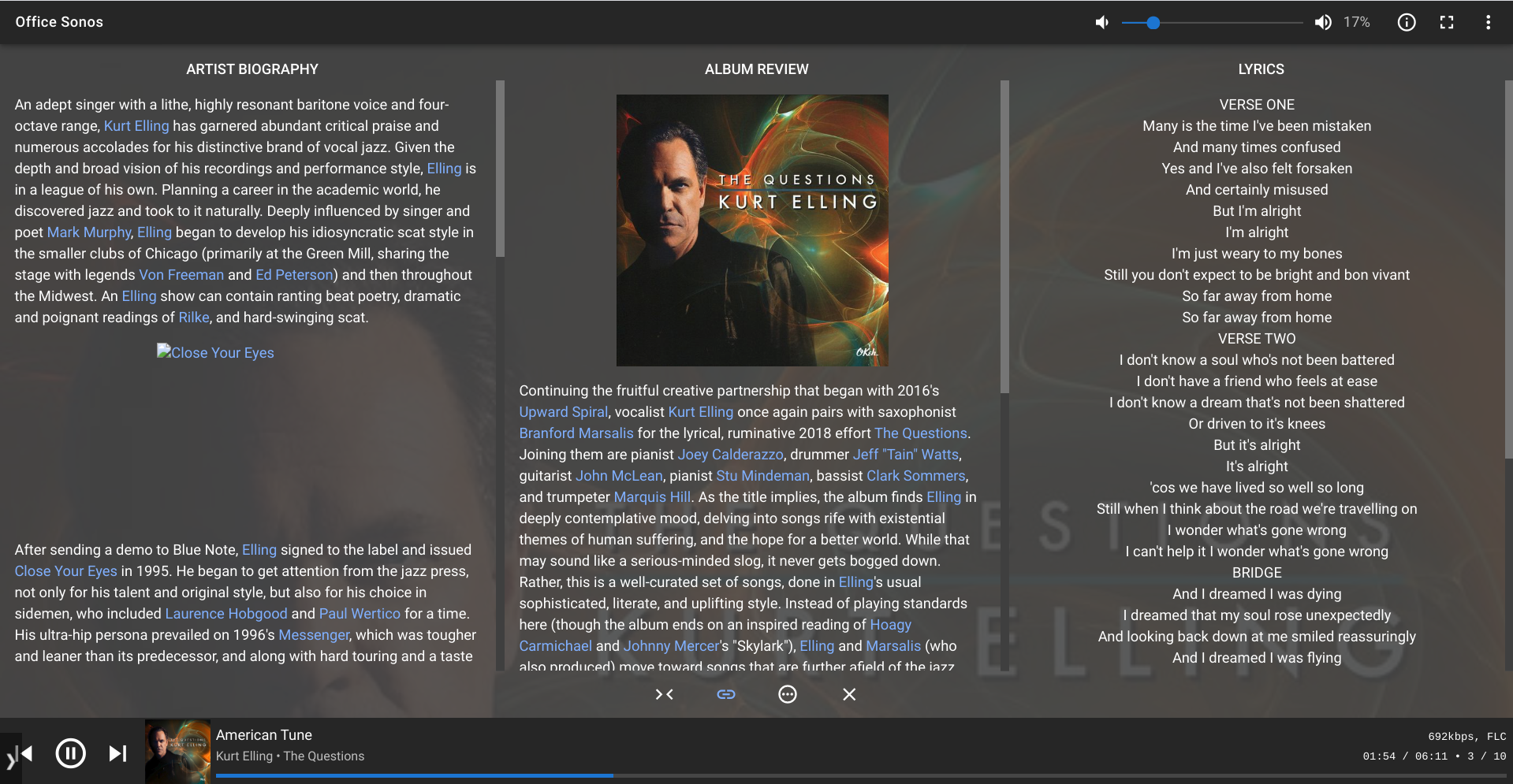LMS offers some interesting features which you can use alongside the standard Sonos setup. Using LMS requires that you install the server software on a networked device (eg. a PC running Windows, iOS, or Linux, and even some NAS) - a popular choice is the Raspbery Pi (even including the ultra-cheap Pi Zero at 20 USD). Installing the software is a task for an average user (and is largely accomplished via a web-browser interface). Once installed, Sonos devices are seen by LMS as squeezebox players, and have full access to all the features which the server software offers.
Why might you consider this as an addition to your Sonos system? Here are some pros:
- LMS is complementary to the native Sonos setup. You do not lose any Sonos features.
- LMS is multi-platform. Media control is also multi-platform (via web--browser access). Apps are also available for both Android and iOS (either free or at low cost.
- There is no limit for local music libraries
- Offers access to Spotify, Qobuz, Tidal and Deezer streaming. You can also access one of the UK’s most popular radio services, with listen again features! Podcasts are also available.
- A recent addition (in beta) integrates local music library with your Spotify library (albums and playlists). Probable that Qobuz and other streaming will be integrated)
An active and very supportive community forum
… and a couple of cons:
- Additional cost (if necessary)
- Initial installation effort
I’m offering this brief overview in a spirit of cooperation and sharing. Maybe somebody will find it interesting and useful.
It is not intended to decry or compete with the base Sonos system..


